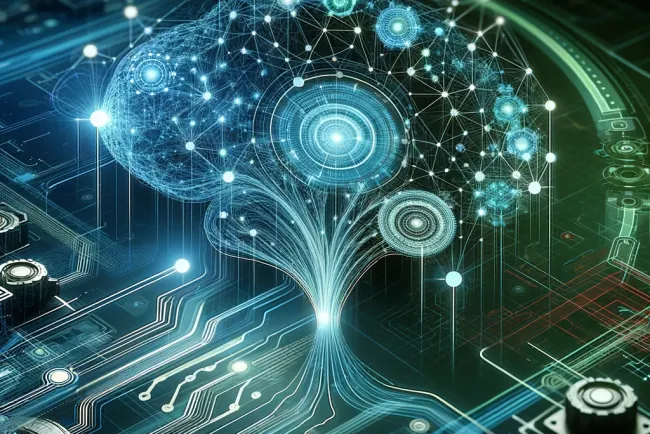How Machine Learning Works: easy step by step Guide
Learn how machine learning works step-by-step, from data collection to model deployment and maintenance.

How Machine Learning Works: Easy Step-by-Step Guide
What is Machine Learning?
Machine learning (ML) is a process that involves creating algorithms that learn from data, identify patterns, and make predictions or decisions based on that learning. It has become essential in modern applications, ranging from recommendation systems to self-driving cars. Let's break down the key steps in the ML process.
Step-by-Step Guide to Machine Learning
-
Data Collection The first step in machine learning is collecting data. The data can be labeled for supervised learning or unlabeled for unsupervised learning. It might be structured, like in databases, or unstructured, such as text or images.
Learn more about how data collection works .
-
Data Preprocessing Data preprocessing cleans and organizes raw data, making it suitable for machine learning. This process includes:
- Data Cleaning: Handling missing values, removing outliers, and correcting errors.
- Feature Engineering: Transforming and selecting features that improve model performance.
- Data Normalization/Standardization: Ensuring data has consistent scales and distributions.
Discover common data preprocessing techniques .
-
Model Selection After preprocessing, choose the ML algorithm that suits the task at hand, whether it's classification, regression, clustering, or recommendation. Common ML algorithms include:
- Linear/Logistic Regression: Useful for regression and binary classification tasks.
- Decision Trees/Random Forests: Effective for classification and regression.
- Support Vector Machines (SVM): Ideal for classification.
- Neural Networks/Deep Learning: Used for complex tasks like image recognition or natural language processing.
- K-Means: Commonly used in unsupervised learning for clustering.
Read about the most popular machine learning algorithms .
-
Model Training Model training involves feeding the preprocessed data into the chosen ML algorithm, allowing it to learn. In supervised learning, the model uses labeled data to guide its learning.
-
Model Evaluation To ensure the model's reliability, evaluate its performance with a separate dataset, often called a validation or test set. Common metrics for evaluation include accuracy, precision, recall, F1-score, and mean squared error.
-
Model Tuning If the model's performance is not satisfactory, hyperparameter tuning may be required. This involves adjusting model parameters or data preprocessing steps to optimize performance. Techniques like grid search or random search are commonly used.
Find out more about hyperparameter tuning .
-
Model Deployment Once the model has been successfully trained and evaluated, it can be deployed for real-world applications. Deployment can mean integrating the model into software, a web application, or an automated system.
-
Model Monitoring and Maintenance Model monitoring is essential to ensure that the deployed model remains accurate and relevant. If the underlying data or conditions change, the model may need retraining or adjustments.
Explore the importance of monitoring and maintaining machine learning models .
Frequently Asked Questions (FAQs) about Machine Learning
-
What is the difference between supervised and unsupervised learning? Supervised learning uses labeled data, where each data point has a known outcome, to train the model. Unsupervised learning, on the other hand, uses unlabeled data, focusing on finding patterns and relationships.
-
What is overfitting in machine learning? Overfitting occurs when a model learns the training data too well, resulting in poor performance on new, unseen data. It typically happens when the model is too complex or when there's insufficient data.
-
Why is model monitoring important after deployment? Model monitoring ensures that the ML model continues to perform accurately and adapts to changes in underlying data or external conditions. Without proper monitoring, models can become outdated and unreliable.
Conclusion
Machine learning involves a cycle of data collection, model building, evaluation, and deployment. The step-by-step guide above outlines the fundamental processes involved in building effective ML applications. With proper monitoring and maintenance, machine learning can solve a wide range of real-world problems.
What's Your Reaction?






















